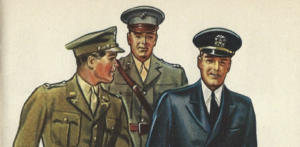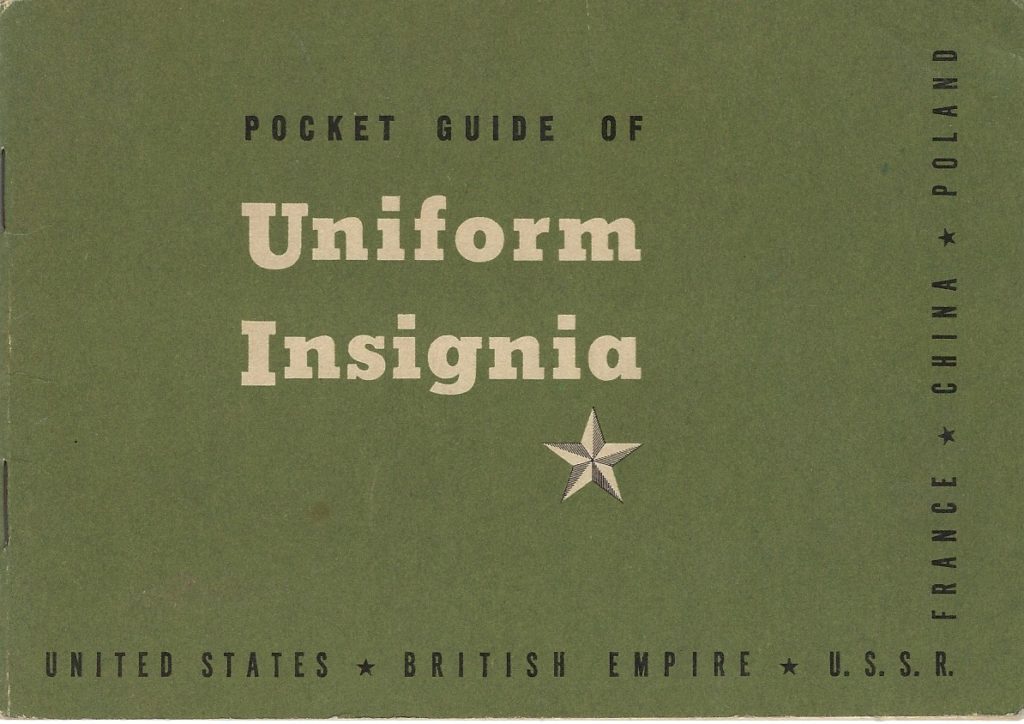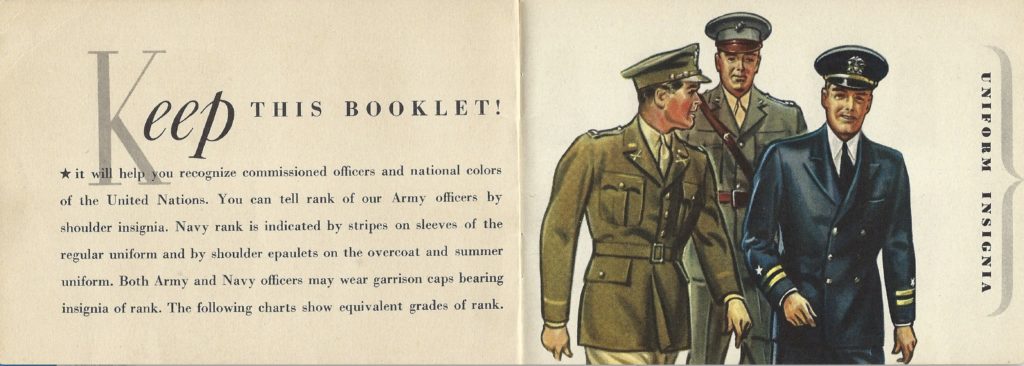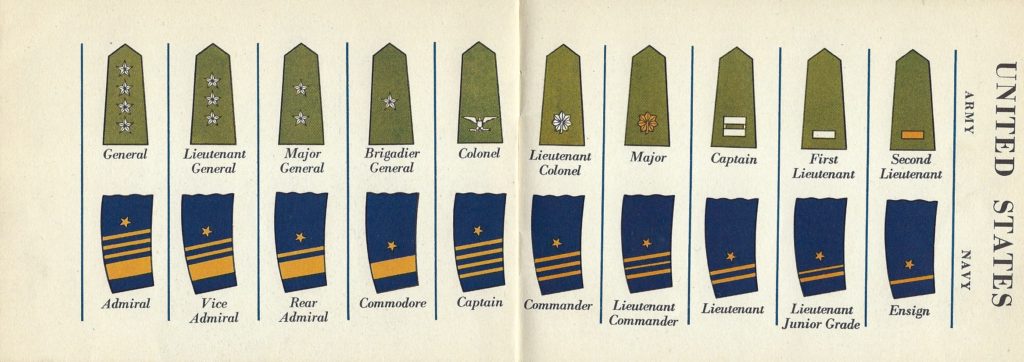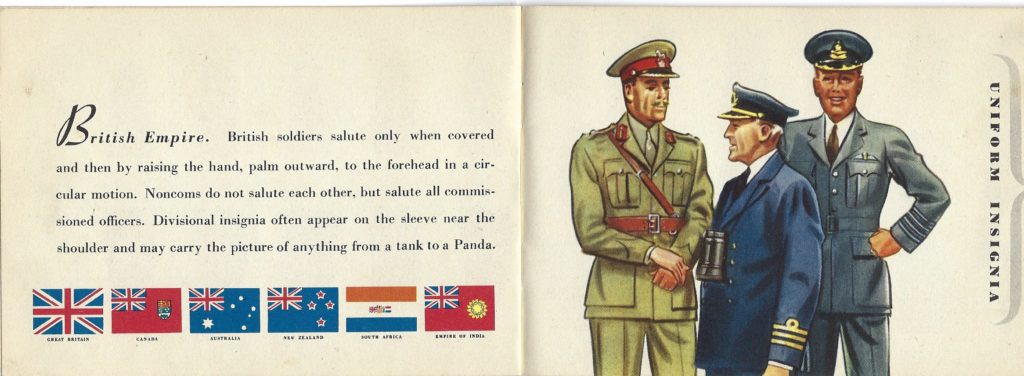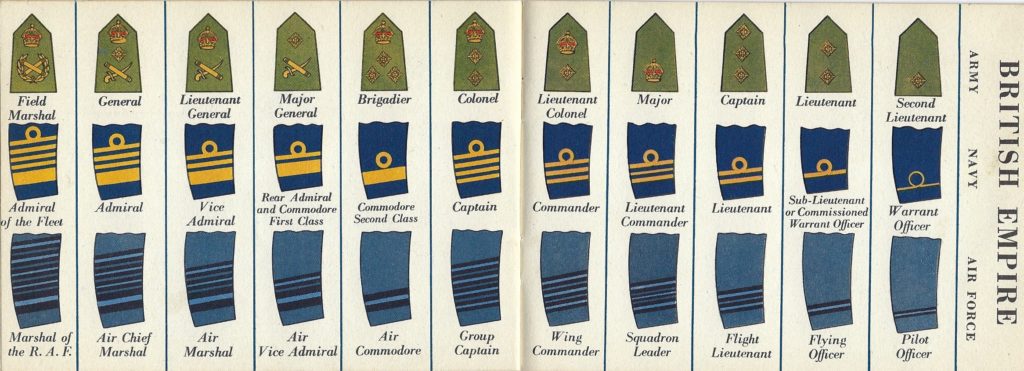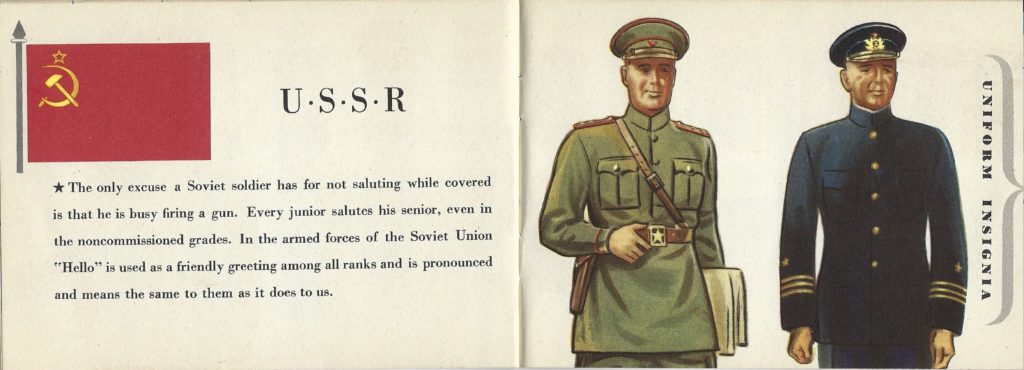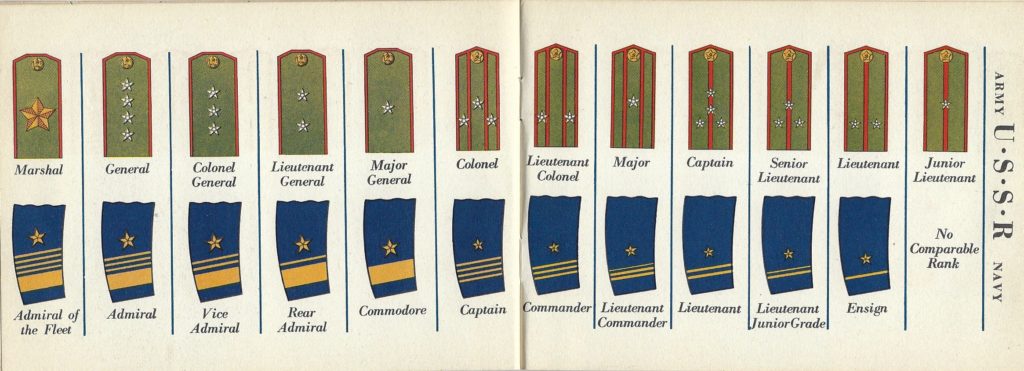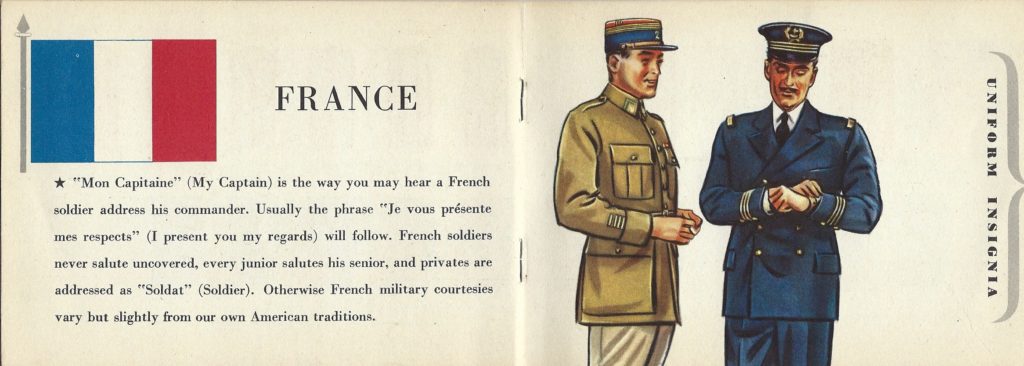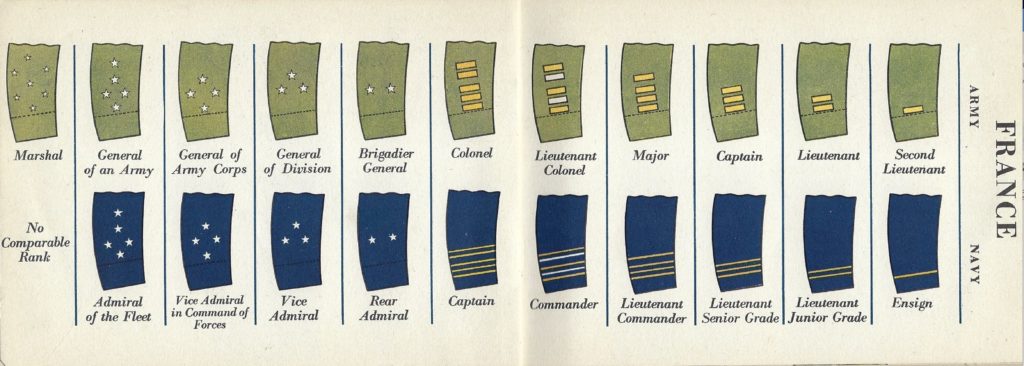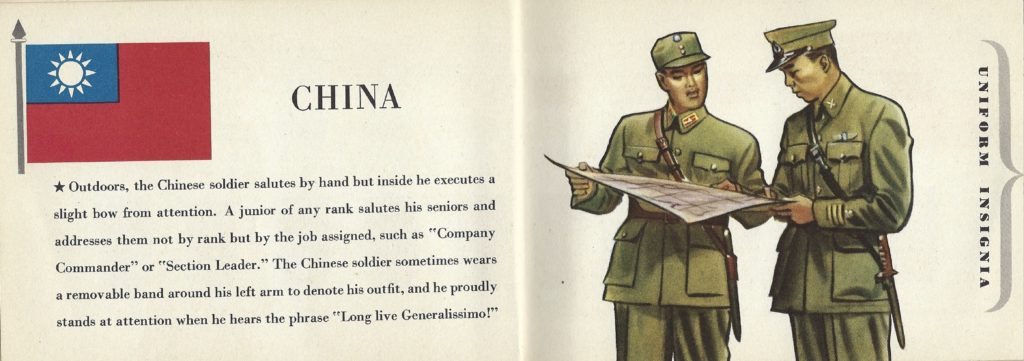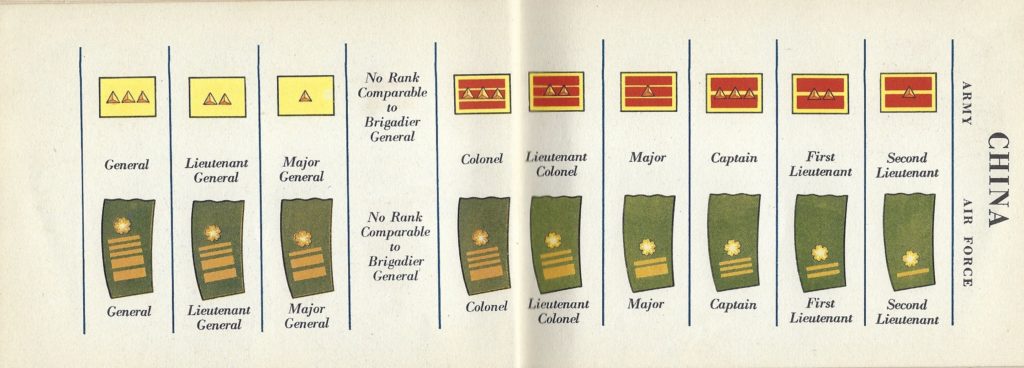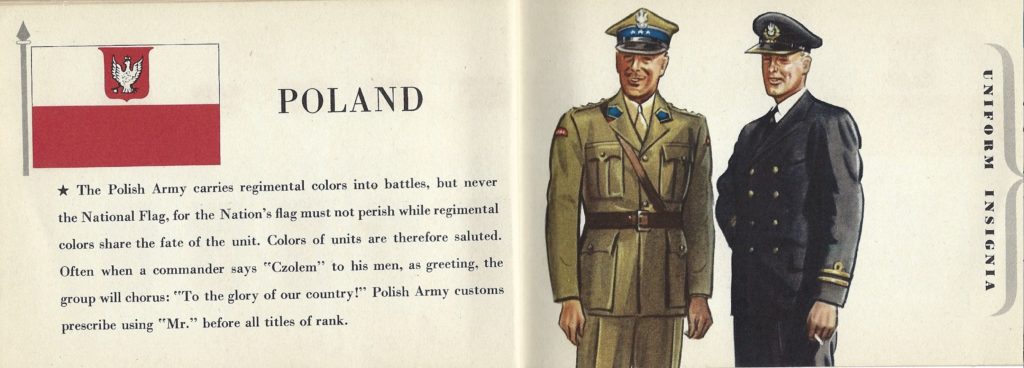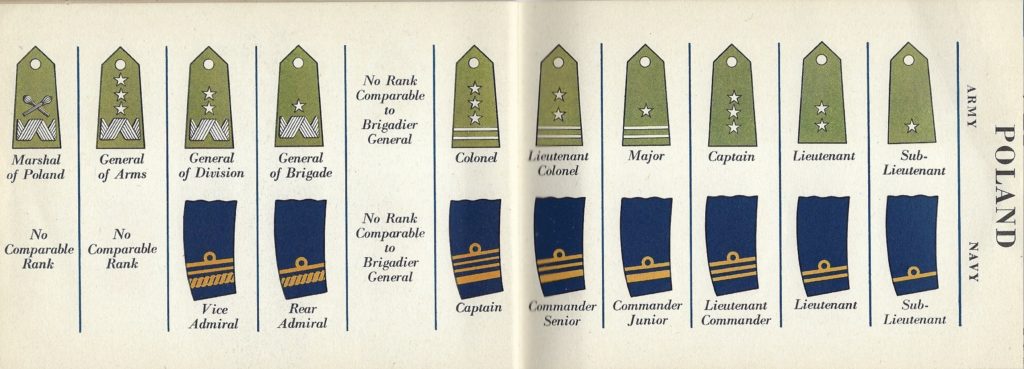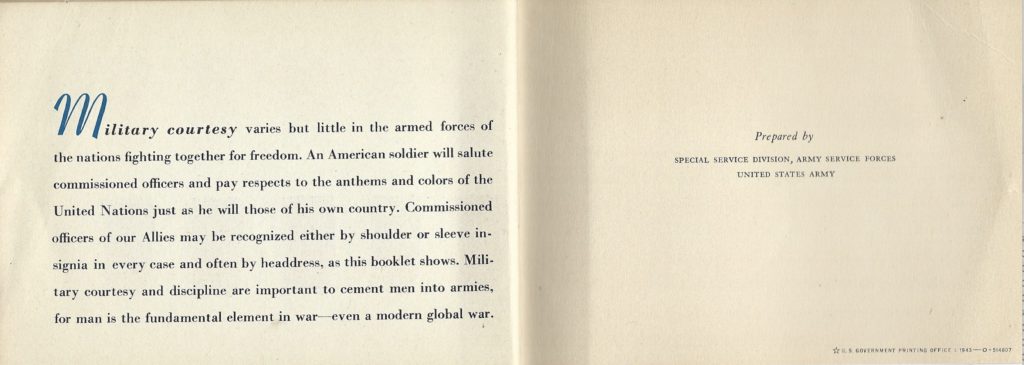Say you’re at a diplomatic function in 1943 and you’re approached by an officer in uniform. What’s his rank? What country is he from? How do you keep from committing a grievous faux pas?
Back in 1943 there was no reason to worry, provided you were equipped with a U.S. government pamphlet called “Pocket Guide of Uniform Insignia.” You could use it to make sure you didn’t address a British major general as a brigadier or mistake a French major for a captain.
The booklet also offered insights into how various ranks from various countries interacted. “British soldiers salute only when covered and then by raising the hand, palm outward, to the forehead in a circular motion,” it explained. “The only excuse a Soviet solder has for not saluting while covered is that he is busy firing a gun,” the pamphlet added. “’Mon Capitaine’ (My Captain) is the way you may hear a French soldier address his commander,” it offered. “The Chinese soldier sometimes wears a removeable band around his left arm to denote his outfit, and he proudly stands at attention when he hears the phrase ‘Long live Generalissimo!’”
“Military courtesy and discipline are important to cement men into armies, for man is the fundamental element in war—even a modern global war,” the pamphlet concluded. Rank may have its privilege, but in World War II it made itself known by insignia.
To see all the pages in the booklet, click on the images below to scroll through them.

